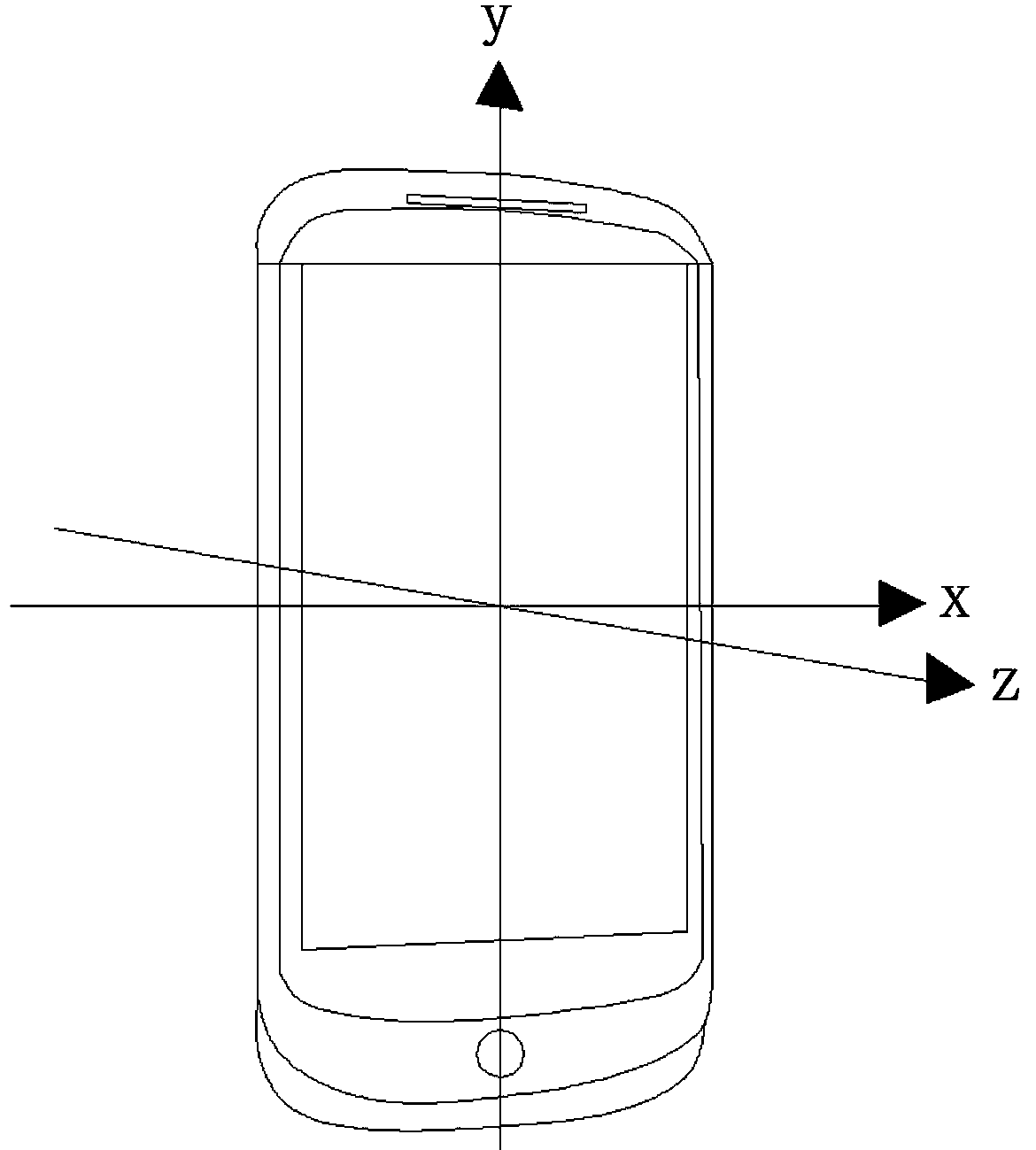Pedestrian gait detection method based on mobile equipment
A mobile device, gait detection technology, used in diagnostic recording/measurement, medical science, sensors, etc., can solve problems such as low accuracy, missed gait detection, polluted pedestrian movement information, etc., to filter noise and avoid interference. shaking effect
- Summary
- Abstract
- Description
- Claims
- Application Information
AI Technical Summary
Problems solved by technology
Method used
Image
Examples
Embodiment 1
[0018] A mobile device-based pedestrian gait detection method, the method includes the following steps:
[0019] a. Collect sensor data of mobile devices in motion in the mobile device coordinate system, including three-axis accelerometers, three-axis gyroscopes, and three-axis magnetometers;
[0020] b. Calculate the rotation matrix of the mobile device according to the sensor data of the mobile phone, and convert the three-axis accelerometer data in the coordinate system of the mobile device to the geographic coordinate system;
[0021] c. Extract the vertical component of the acceleration in the geographic coordinate system, that is, the z-axis component of the geographic coordinate system, and use fast Fourier transform to perform spectrum analysis on it, and obtain the frequency corresponding to each frequency between [0, sampling frequency / 2] signal strength;
[0022] d. Find the top 2 frequencies with the highest signal strength within the frequency range of [0.5,4]Hz,...
Embodiment 2
[0025] According to the rotation matrix, the accelerometer sensor data in the mobile device coordinate system is converted into the horizontal component and the vertical component in the geographic coordinate system;
[0026] The vertical component of the accelerometer in the geographic coordinate system is extracted, and the frequency spectrum is analyzed by fast Fourier transform (FFT) to obtain the amplitude corresponding to each frequency between [0, sampling frequency]. Find the frequencies corresponding to the two largest amplitudes, and confirm whether the ratio of the larger frequency to the smaller frequency between the two satisfies the ~2 times relationship. If it is satisfied, keep the larger frequency as the pedestrian forward frequency, and band-pass filter the vertical component of the accelerometer in the geographic coordinate system; if not, reserve the smaller frequency as the pedestrian forward frequency, and filter the accelerometer in the geographic coordin...
PUM
 Login to View More
Login to View More Abstract
Description
Claims
Application Information
 Login to View More
Login to View More - Generate Ideas
- Intellectual Property
- Life Sciences
- Materials
- Tech Scout
- Unparalleled Data Quality
- Higher Quality Content
- 60% Fewer Hallucinations
Browse by: Latest US Patents, China's latest patents, Technical Efficacy Thesaurus, Application Domain, Technology Topic, Popular Technical Reports.
© 2025 PatSnap. All rights reserved.Legal|Privacy policy|Modern Slavery Act Transparency Statement|Sitemap|About US| Contact US: help@patsnap.com


